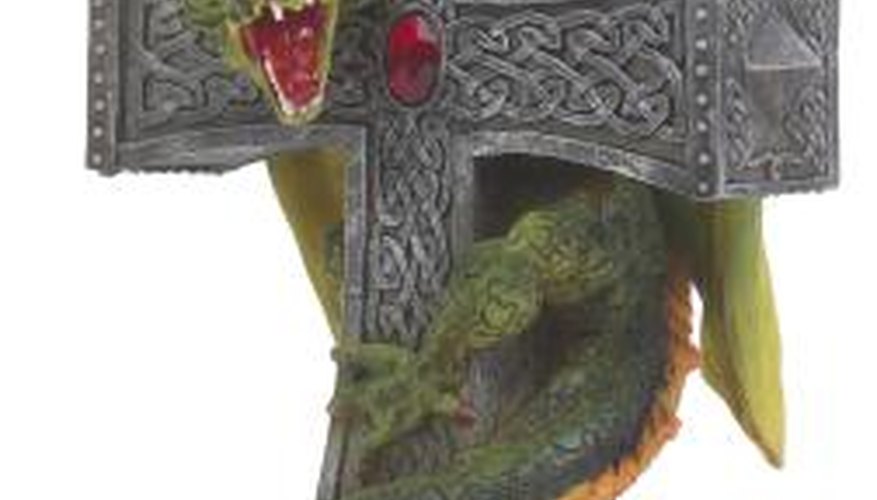Pewter is a rough-surfaced, thin metal commonly used to produce miniatures and other decorative items. Pewter items are decorated using either acrylic or enamel paints. Enamel paints are oil-based and more durable. Enamel paints provide even coverage to your pewter models by filling in the rough edges and indentations that naturally occur in this type of metal. Enamel paints are available in sprays as well as small bottles used with paintbrushes.
- Pewter is a rough-surfaced, thin metal commonly used to produce miniatures and other decorative items.
- Enamel paints provide even coverage to your pewter models by filling in the rough edges and indentations that naturally occur in this type of metal.
Prime your pewter with a white, grey or black primer solution. Primer allows your paint to "stick" to the pewter, reducing chipping or uneven coverage. Once you have primed the entire surface, allow it to dry thoroughly.
Buff your miniature with a clean rag. This will open up the detail of your figure, allowing paint to cover every nook and cranny of the piece. Buffing will not harm your primer, as long as it's completely dry.
- Buff your miniature with a clean rag.
- Buffing will not harm your primer, as long as it's completely dry.
Stir your enamel paint with a small paint spatula or wooden dowel. Shaking your enamel will only cause the colour to come out dulled. Stirring ensures mixing of all the undertones.
Apply the lighter colour of enamel first. Paint all areas in which the lighter colour is to go. This provides greater detail by causing your work to look highlighted and more natural.
Paint your model or miniature with darker colours toward the end. Add shading with greys or blacks to further accentuate the features in your work.
Spray your work with finishing spray and allow it to dry. Pewter is not cooked to set enamel paints.
